Important tool updates - Learn more
- Learn
-
Articles
Read about influencer marketing
-
Growthnotes - Newsletter
Insights for the modern marketer
Instagram has over 500 million people using Stories daily, and that scale makes this format hard to overlook in 2025. For younger users, Story ads even outperform Feed ads with a 23% higher view-through rate. This shows how effective the format can be for brands that target Gen Z.
The challenge is that while you know Stories drive results, specs, performance gaps, and creative fatigue usually slow down your progress. That’s because strong outcomes demand both technical precision and creative testing discipline.
In this article, you’ll learn how Instagram Story ads work, what formats and practices improve return, and which brand examples prove it. Let’s start by clarifying what this format actually is before moving into strategy.
Scale & Impact: Over 500M daily Story users; 37% of all Instagram ads now run in Stories. They outperform Feed ads with up to 23% higher view-through rates and 78% more clicks.
Formats:
Best Practices:
Examples: Gatsby Chocolate (UGC hooks), Gymshark (9.3× ROAS Black Friday Stories), Glossier (minimal UGC collabs), PUMA (sequential funnel ads).
Comparison: Stories beat Feed ads on CTR and cost-efficiency, outperform Carousels on quick conversions, and drive more direct actions than Reels.
ROI & Measurement: Use incrementality tests, MMM, predictive analytics, and dashboards (GA4, Looker Studio). Tools like inBeat’s ROAS calculator help tie Stories directly to revenue.
Key Takeaway: Stories remain Instagram’s most effective placement in 2025. Brands that combine creative discipline, interactivity, and precise measurement unlock higher ROI and scalable growth.
Instagram Stories ads are full-screen vertical format placements that appear between user Stories. They give your brand prime visibility at the top of the app. Each card runs 1-15 seconds, with specs set at 1080x1920 pixels and a 9:16 aspect ratio.
Also, campaigns can extend up to 60 seconds when split into multiple cards. This makes it a flexible space for both quick offers and multi-step storytelling.
In 2023, story ads generated $20.03 billion in revenue. Two years later (in 2025), they represent 37% of all Instagram ads, which shows just how important this format has become.
To see how businesses apply Stories in practice, you can watch this HubSpot Marketing’s step-by-step guide on Instagram ads for business:
Now, let’s see why Stories matter so much for performance marketers in 2025.
Instagram has nearly 2 billion monthly active users in 2025, and Stories sit at the center of that daily activity. The placement is especially valuable because 58% of U.S. users earning over $100,000 are on Instagram. This means you reach audiences with real purchasing power.
Compared to feed ads, Stories generate 78% more clicks and achieve 44% greater reach. On top of that, Instagram reports that 50% of its users have visited a site or made a purchase after seeing a product in a Story. These numbers show how Stories work for both brand awareness and direct revenue growth.
Building on that, Stories also offer specific advantages for performance marketers. Here are key benefits you can use to strengthen your next ad campaign:
Up next, we’ll look at the different Instagram ad formats and how each one fits your goals.
Story ads give you several ways to match creative with performance goals. Each format has its own strengths, from quick reminders to immersive storytelling.
Knowing when to use each option helps you stretch your budget, improve engagement rate, and reduce wasted cycles in your advertising campaigns.
Image ads are simple, full-screen placements sized at 1080x1920 with a 9:16 ratio. Each frame lasts up to 15 seconds, though you get the strongest impact in the first few. They work best for flash sales, new product drops, or time-limited campaigns where speed matters.
The most effective ad creative uses bold visuals, clear text overlays, and direct call-to-action buttons like “Shop Now.” For example, a fashion brand announcing a weekend discount can run a single, high-contrast slide with a swipe-up CTA that drives immediate clicks.
Here's how Xiaomi promoted their early reveal livestream to a lot of tech fans:
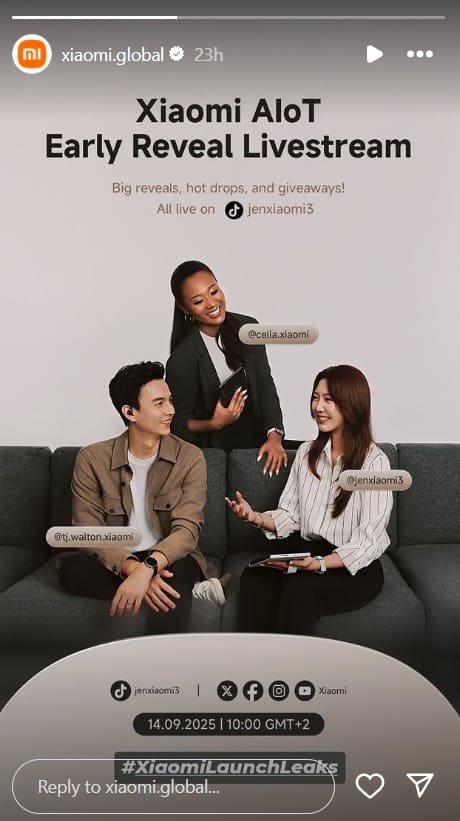
Video ads follow the same specs as images but deliver stronger performance, with research showing 612% higher interaction than static content. Each video can run up to 15 seconds per card, and you can sequence multiple clips for longer storytelling.
The real value comes from how natural these feel to your target audience. Short, UGC-style clips with captions make your ad blend into the flow of Stories, which keeps viewers from skipping.
A skincare brand might use a quick before-and-after demo paired with bold subtitles to drive video views and improve recall, even with sound off.
Brooklinen used UGC content to present how good and cozy their sheets are:
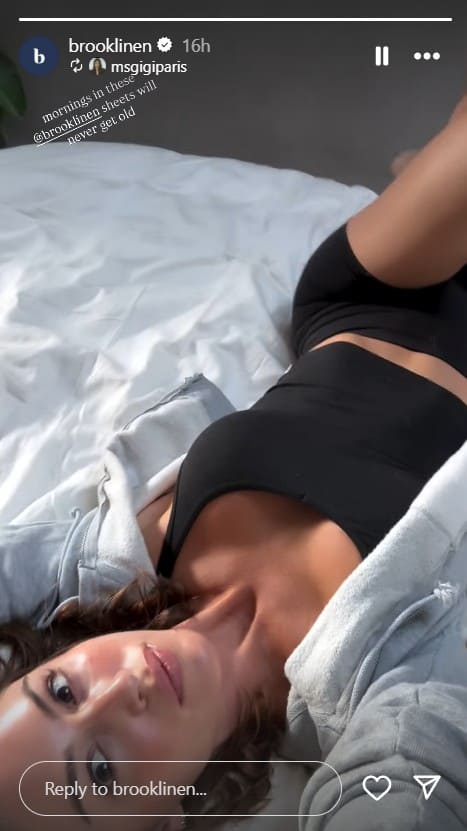
Carousel ads let you chain 2-10 cards that viewers can swipe through. This is ideal for storytelling, product walkthroughs, or showcasing a product line in detail. Each card follows the same 9:16 specs, and you can mix images and videos for variety.
For example, a jewelery brand might use carousels to show different earring styles in a single sequence. This maintains attention while allowing space for multiple SKUs. This format is especially strong if your Instagram campaign aims to highlight choice and encourage longer interaction without overwhelming one card.
Here's how Nicole on YouTube created a quick carousel for Instagram:
Adding interactive elements such as polls, quizzes, or Q&A stickers changes a passive view into an active response. These tools drive user engagement as well as feed you valuable data for refining audience targeting.
A well-known example is Yoga International, which ran a poll inside Stories and saw 18% of its sign-ups come directly from that placement (according to Cropink). Interactivity raises completion rates and can reduce CPC because Meta favors ads that hold attention. That means you spend less while gaining more qualified leads.
Here's how S-kin Studio Jewelry showed off its vintage earring set on Instagram stories. It's with an interactive button that takes you straight to its website:

Branded content ads use creator accounts to run placements on behalf of your brand. These are powerful because they borrow the trust and authenticity of content creators while still being trackable inside Ads Manager.
For instance, beauty brand Klairs used a creator’s Story as a Branded Content Ad and achieved a 1.8x lift in ROAS. This format is particularly effective when your goal is influencer marketing that feels native while still serving measurable business outcomes.
Story ads give you multiple ways to fit creative execution to goals, whether you need awareness, conversions, or faster testing cycles. Dior does this pretty well, with collaborations with famous people to show off their products:
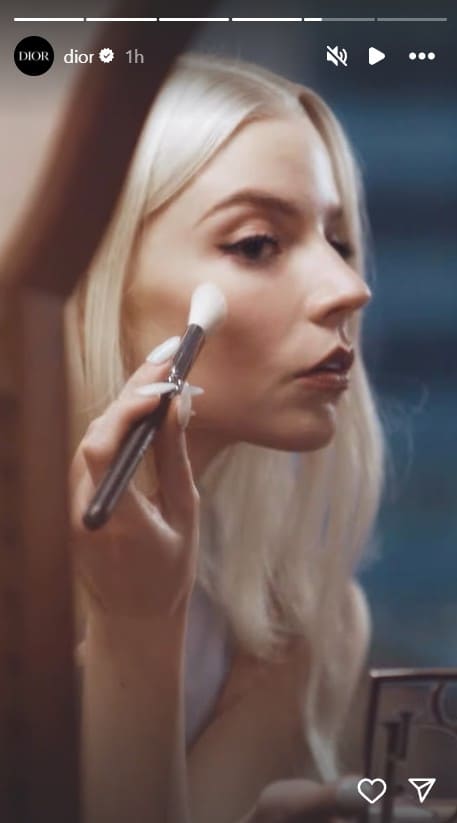
Now, let’s look at the best practices that help each format work better for you.
Strong creative is what separates average results from high-performing campaigns. These practices help you design Stories that fit user behavior, maximize each ad placement, and keep your content competitive across social media platforms.
Stories are built for a vertical 9:16 full-screen experience, so you need to design with that in mind. Keep logos and call-to-action buttons within safe zones (top 250px, bottom 340px) so nothing gets cut off.
Short video clips of 1-15 seconds work best when they start with a strong hook. A useful approach is to keep key visuals centered, which makes sure nothing gets lost in the crop.

Viewers swipe fast, and you lose impact if the first seconds feel generic. Use bold movement, strong visual content, or human faces to hold attention. RivalHQ research shows many brands lose around 20% of their audience within seconds if the opening is weak.
The truth is that you only have a short window to stop skips, so your creative has to work instantly. Simple tactics, such as placing your main product upfront or starting with a reaction shot, can help you keep viewers engaged long enough to deliver your message.
Native-looking ads consistently outperform polished studio work because they blend into the user experience. When your Story feels like content instead of an ad, you reduce resistance and boost trust. A strong approach is using User-Generated Content (UGC videos) with simple text overlays.
For example, one of our clients, Prose, uses UGC-style videos with close-up product demos and simple text overlays. This format feels authentic, reduces ad fatigue, and drives stronger engagement.

Polls, quizzes, and Q&A stickers turn passive viewing into active participation. These interactive elements lower CPMs, raise CTR, and help you collect feedback at scale. Instagram’s own surveys show that 57% of people want to see more polls and quizzes from brands on Stories.
CeraVe put this into action by asking followers whether they had tried its daily moisturizer and what they loved about it. That single sequence kept attention while feeding insights straight into the brand’s content planning. This type of ad keeps your audience engaged longer and prevents creative burnout.
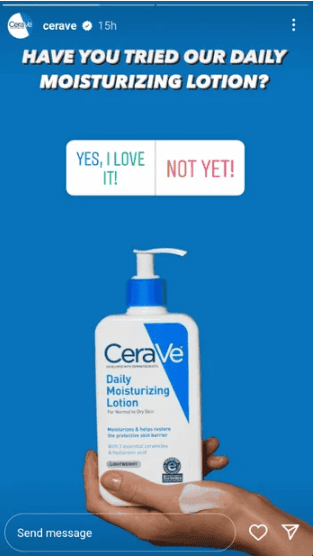
15% of Instagram users scroll Stories without sound. This means your Story has to work visually even when muted. The practical solution is to add captions, bold overlays, and clear imagery. If someone skips audio, your main message should still land in seconds.
Keeping visual identity consistent across cards helps reinforce brand recall and avoids disjointed impressions. A skincare demo with step-by-step subtitles is one way to keep clarity for both silent and sound-on viewers.
The same idea works with motion. California Pizza Kitchen used a Boomerang loop of cheese being grated onto a frozen pizza and turned a quiet moment into something lively.
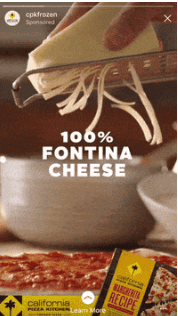
When you combine captions with subtle movement, you hold attention even without audio. Without these cues, you risk losing conversions simply because your audience never hears the message.
Not every Story ad serves the same purpose. Your creative has to match where your audience is in the funnel. If you misalign, you waste spend and lose momentum.
For example, for PUMA, inBeat Agency designed a sequential ad flow built around three Instagram Stories.
Story 1: Hooking Attention
The first story highlighted the special discount with a bold CTA overlay, which guided viewers to the main video post. It built instant awareness and sparked engagement.
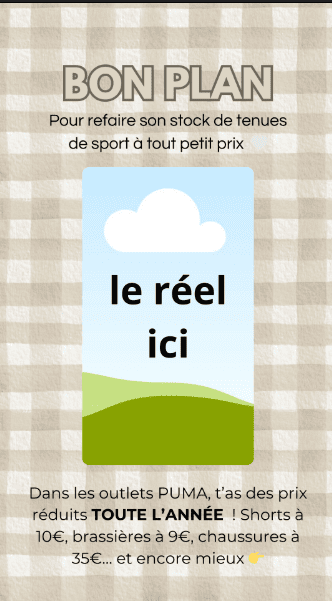
Story 2: Showing Proof
The second story displayed the barcode for in-store redemption, paired with simple steps on how to screenshot and use it. This made the offer feel exclusive and easy to claim.
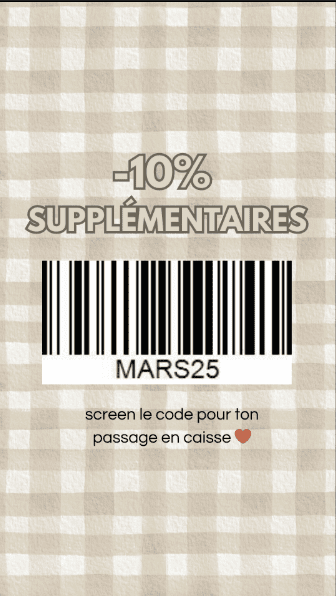
Story 3: Driving Urgency
The third story reminded viewers that the deal was about to expire, timed strategically to trigger last-minute action.
Funnel alignment reduces wasted testing and makes each asset work harder for the same budget.
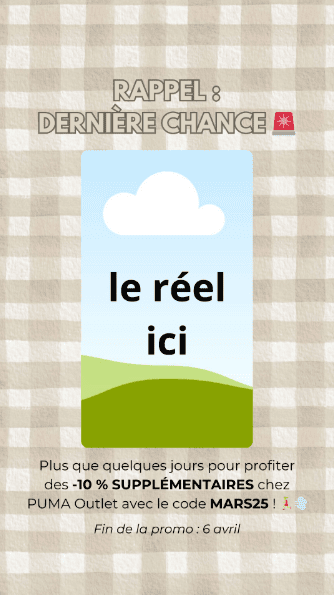
Stories move quickly, and your creative process has to match that pace. A/B test two versions side by side, such as product-first vs. reaction-first, to see what resonates. Instead of splitting the budget across too many ad sets, consolidate campaigns so Meta’s algorithm receives stronger signals.
You can inBeat.co’s free ad mockup generator, which lets you quickly design and test Instagram ad variations before spending a dollar. This kind of rapid iteration helps you identify winning content faster while cutting out noise.
The best Instagram advertising teams treat iteration as part of their workflow and not an afterthought. Over time, this cycle is what lifts results from average benchmarks to top-tier performance, both in conversion and cost efficiency.
As Donna Robinson from Forbes put it
“To stand out from the crowd and encourage engagement, test overlay features such as polls and stickers. And to ensure that your stories drive traffic, test multiple story ads and (if you have access to it) provide a direct link using the link sticker feature so users can easily click through to your site.”
Strong Instagram Story ads feel natural, grab attention fast, and present the product in a way that feels personal. Let’s explore how top brands use formats like UGC-style demos, influencer-led clips, and sequential flows to turn casual viewers into engaged customers.
Each example shows a practical angle you can replicate in your own campaigns.
Take Gatsby Chocolate, for example. Our sister agency inBeat helped them showcase their low-calorie bars with relatable creator stories. Their team focused on hooks like “you can eat the whole bar in one sitting” and “only 200 calories.” These ads presented the product and built trust by showing real people enjoying it.
Gymshark ran Black Friday blackout Stories ads that drove urgency and exclusivity. The result was a 9.3× ROAS and a 197% year-over-year jump in holiday revenue.
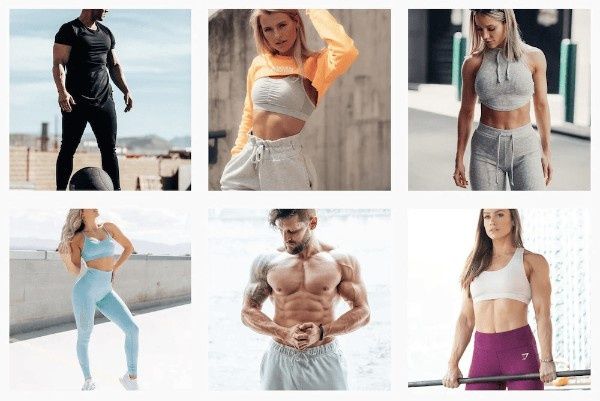
Glossier leaned on simple product closeups paired with UGC collabs. This mix of minimal visuals and authentic voices led to some of their strongest engagement rates.
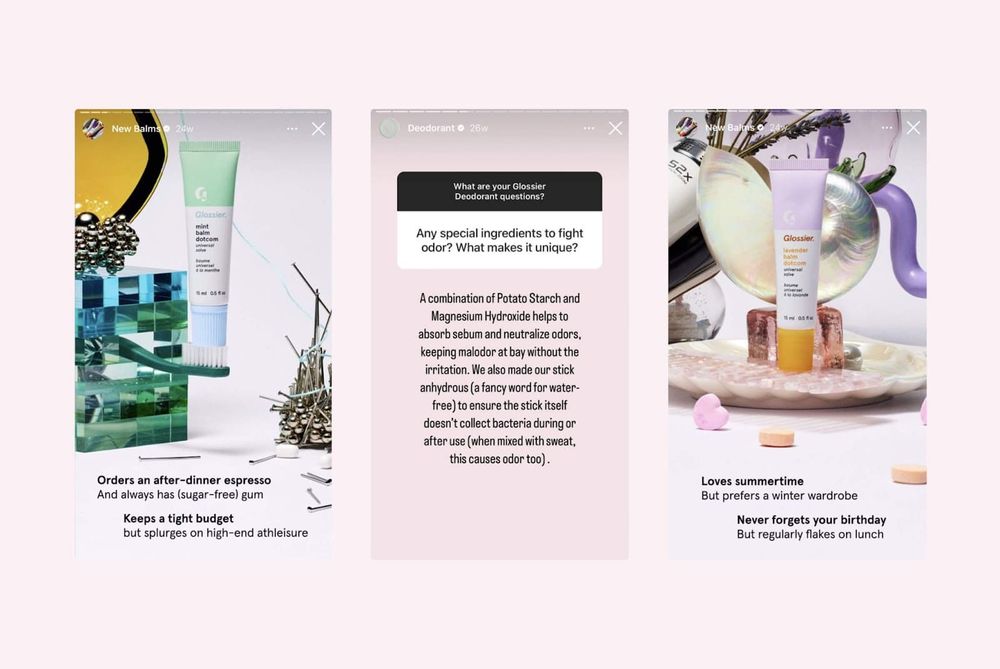
When you plan budget allocation, you have to decide which formats move the needle for your goals. Reels, Feed, and Carousels all serve different purposes, but Stories remain the most reliable for immediate action and conversion-focused outcomes.
Reels dominate usage, accounting for 38.5% of Instagram feed posts and 50% of total time spent on the platform. They also receive 22% higher interaction than standard video posts, generating 1.36× more reach than Carousels (according to Teleprompter) and 2.25× more than photos. Still, Stories outperform them when it comes to immediate actions such as swipe-ups and purchases.
Feed placements are useful for evergreen content and brand consistency. However, they deliver lower CTR than Stories. CPM costs for Feed ads are also higher. Story ads cost 14% less, which makes them a more cost-effective tool for short-term awareness.
Carousels shine when you need storytelling or multi-product displays. Teleprompter reports that engagement rates average 0.99%, compared to 0.70% for single images. The downside is lower reach and higher attention demands. They work best when you want to show a product line in depth rather than drive quick conversions.
Because of these differences, many brands now allocate a larger share of their social media advertising mix to Stories. That’s because they balance reach with action and give you both scale and performance.
With rising CPMs and weaker tracking signals, you need a sharper measurement strategy to prove the value of Stories ads. Without it, you risk scaling campaigns that burn budget instead of driving profit.
Key methods you can apply include:
Dashboards such as GA4, Looker Studio, or Power BI help you centralize results. You can also use inBeat.co free ROAS calculator and influencer marketing ROI calculator, so you can tie paid media ad creatives directly to business outcomes.
Stories remain one of Instagram’s most powerful placements. They give you high engagement, fast conversions, and a flexible space to test creative before scaling.
And here's the thing, long-term success comes from pairing format mastery with precise measurement.
That’s where expert agencies like inBeat step in. They help you connect every Story ad to ROI with proven tools, advanced analytics, and creative expertise. Whether you’re running standalone Stories or pairing them with Facebook ads, we give you the strategy to make each dollar work harder.
Contact them today to scale with ROI-driven Stories campaigns.
The most effective format is a vertical format Stories ad in a 9:16 ratio (1080×1920). This layout fills the screen, avoids cropping issues, and aligns with how people hold their phones, which creates smooth and immersive full-screen experiences.
Yes, they’re cost-effective when done well. Stories drive higher click-through rates than Instagram feed ads and offer swipe-up actions that encourage fast conversions. Their immersive design makes them one of the strongest tools for direct response.
No. Unlike organic Stories, paid campaigns run for as long as you set in Ads Manager. They stay active across placements and can even retarget users if combined with Instagram Pixels for conversion tracking.
The drawbacks include higher CPC compared to Facebook ads, competition for limited placements, and creative fatigue. Costs can spike in peak seasons, and the platform’s younger audience may not align with every brand’s target segment.
According to Cropink, CPC ranges from $0.40 to $1.73, CPM averages $2.50 to $10.81, and CPE sits near $0.01 to $0.06 in 2025. Your actual spend depends on campaign objective, creative quality, targeting options, and competition. Careful testing helps keep costs efficient.